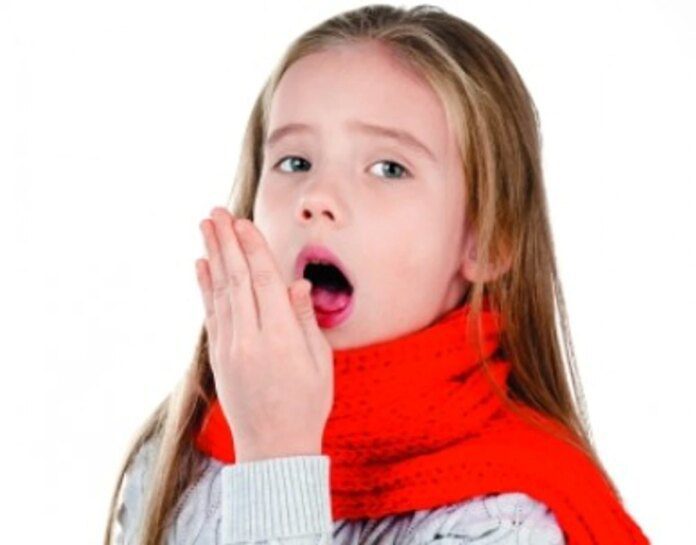
The exact causes of the increase in the number of asthma patients are not known exactly, but some doctors suggest that the little ones spend too much time indoors and are more exposed to dust, environmental pollutants, and passive smoking.
Others believe that the administration of antibiotics for any virus is the cause, while another category claims that excessive protection against microbes would contribute to the decline of their immune system.
The main signs of the disease
Not all children with asthma have the same symptoms, and many of them can vary from one episode to another, even in the same patient. Moreover, the presence of certain alarm signals does not automatically mean that the little one has asthma.
To establish an accurate diagnosis, a visit to the family doctor and a pulmonologist is necessary. Among the main signs of the disease are:
- frequent coughing, which can occur while playing, sleeping, laughing, or crying;
- lack of energy while playing;
- rapid breathing;
- chest pains;
- wheezing;
- sleep problems caused by breathing difficulties, coughing, or wheezing;
- coughing fits that get worse when he has a cold or flu;
- difficult recovery after a respiratory infection.
- Risk factors for the onset of the disease.
There are several risk factors for developing asthma during childhood. Among them, we mention:
- allergies (hay fever) or allergic eczema (rash);
- family history of asthma;
- frequent respiratory infections;
- low birth weight;
- exposure to cigarette smoke during pregnancy and after birth.
When to go to the doctor
It is recommended to make an appointment with a pulmonologist as soon as possible if you suspect that the little one might have asthma. Early treatment will help not only to keep the disease under control but can also prevent asthma attacks.
Listen to the child’s coughing fits when he sleeps and pay attention to all the signals transmitted by the little one. Chest pain is not necessarily an invented symptom to avoid going to school. Also, if strong emotional reactions (such as stress, screaming, crying, or laughing) trigger bouts of coughing or wheezing, inform your family doctor.
Crises require urgent intervention
In severe cases, you may see the child’s chest heaving in a desperate attempt to breathe. Also, in these situations, the heart rate is very high, the little one sweats, and the chest pains are more pronounced.
“Asthmatic disease (severe asthma attack) is characterized by strong symptoms and urgent measures must be taken, otherwise the child’s life is endangered. During the crisis, the child cannot remove the air from the lungs, suffocating, because a new inspiration is produced with difficulty, given that the inspiratory space in the lungs keeps filling with each breath – the progression to suffocation is fast.
The child takes a characteristic position, trying to use the expiratory muscles, as such, he leans forward and holds onto a support with his hands. A whistling sound is heard during breathing – when it is no longer heard it is a very serious sign (wheezing is the name of this whistling sound). The color of the skin changes, the child becomes pale, and the extremities become bruised and cold. If you don’t intervene quickly, the child can lose consciousness and die from asphyxiation”, points out Dr. Luminiţa Alexandrescu, primary care physician.
Correct diagnosis
Asthma in children can often be diagnosed by the family doctor based on the medical history, and symptoms, as well as following a medical examination. Do not forget that, often, when you go with an infant or a small child to the doctor, the symptoms may not show up during the check-up, therefore, in these cases, the parents must inform him about their existence.
The child’s doctor will be interested in any antecedents of breathing problems, in you, the child’s father, and the little one, as well as other family antecedents of asthma, allergies, eczema, or lung diseases. It is important to describe the symptoms in as much detail as possible, including when they start and how often they occur. The specialist will suggest a chest x-ray or a simple pulmonary function test, called spirometry, for children older than 6 years. The results help the doctor determine how severe the asthma is.
Expert advice
Dr. Luminiţa Alexandrescu, primary care physician, e-mail: [email protected]: 0722665988
Bronchial asthma is an inflammatory disease of the respiratory tract. This inflammation is associated with bronchial hyperreactivity, with bronchial hypersecretion that further facilitates the narrowing of the bronchial lumen, as well as with a strong spasm of the airways – bronchospasm. Because the symptoms can be easily confused with those of respiratory viral infections, a correct diagnosis is sometimes difficult to make. The testing also depends on the age of the child, some tests cannot be applied to children younger than 3-4 years.






































